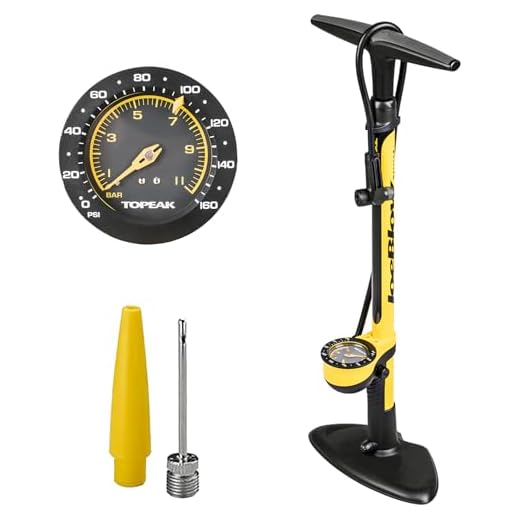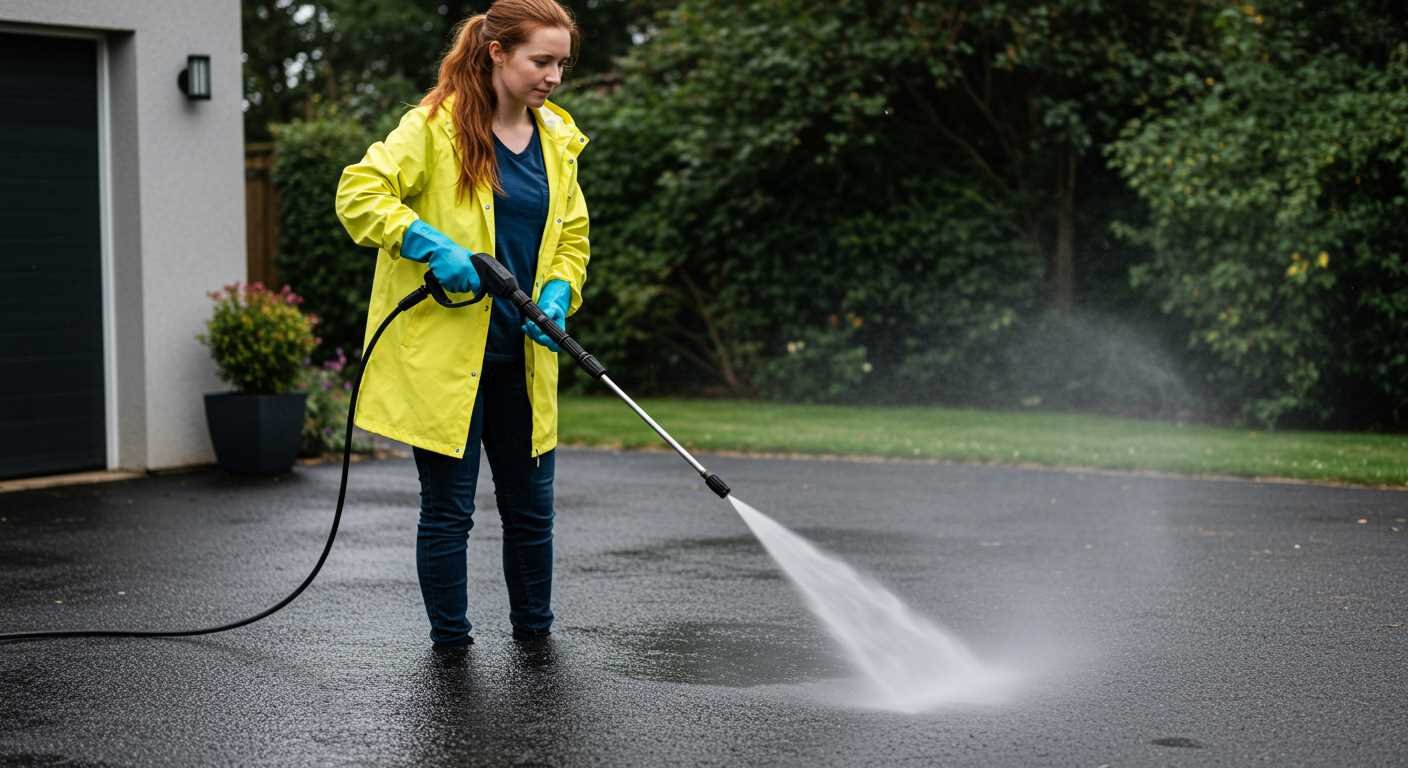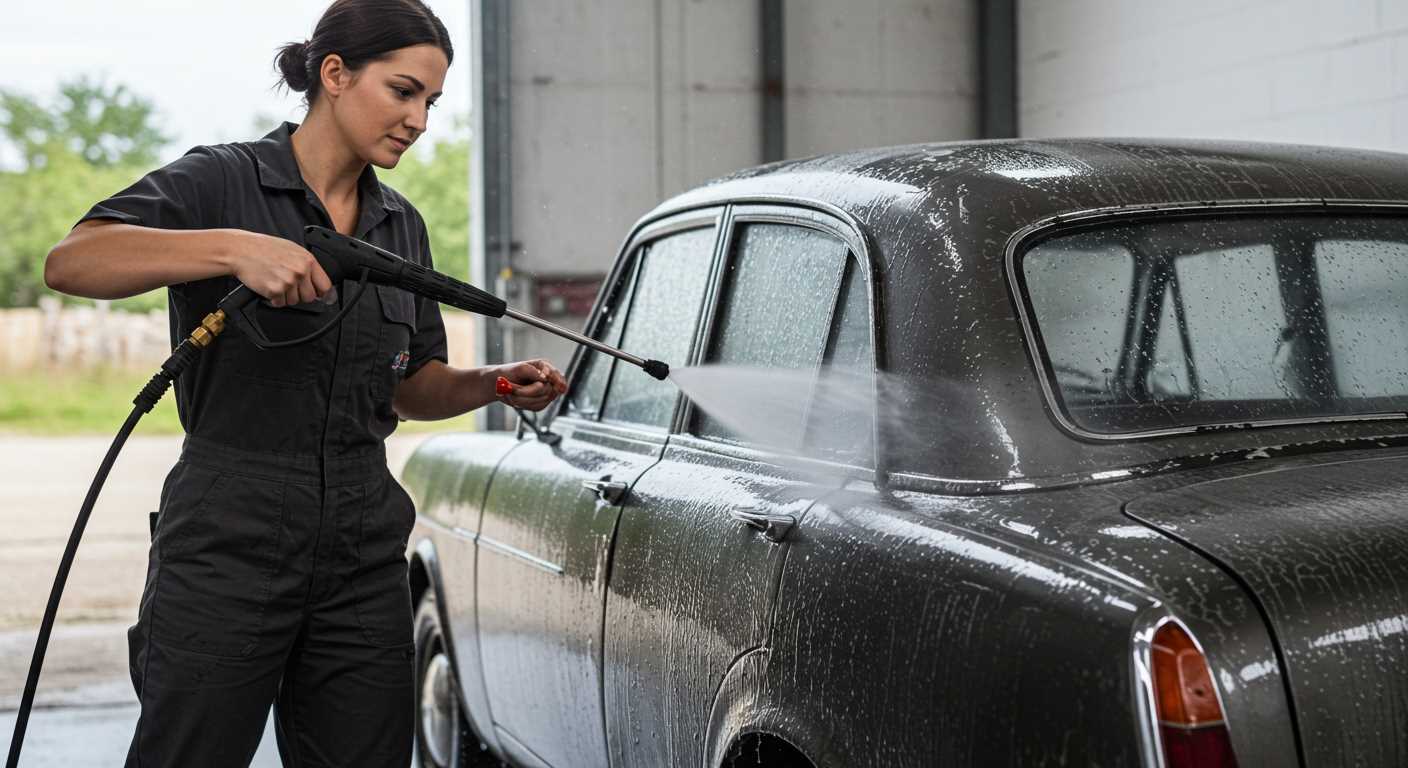



For those keen on creating a cleaning apparatus that utilises intense water flow, I suggest starting with an electric motor of at least 1.5 kW paired with a reliable garden hose. This setup typically provides sufficient water velocity for residential tasks, such as washing vehicles or outdoor furniture.
Invest in a water pump designed for higher outputs; a model capable of delivering roughly 130 bar will ensure efficient scrubbing action. Ensure that your chosen model can accommodate garden hose fittings to streamline assembly. A quick-connect nozzle adapter can significantly simplify swapping out attachments for different tasks.
Understand that utilising a pressure gauge is paramount; it allows you to monitor water output and maintain optimal performance. Don’t overlook structural details; a sturdy frame built from PVC or steel can ensure longevity and stability, preventing wobbles during operation.
To boost functionality, consider integrating additional accessories like foam cannons or rotary scrubbers; these tools enhance cleaning efficacy and reduce the manual effort required. Adequate safety measures, such as non-slip surfaces and proper eye protection, must be at the forefront to prevent any accidents while using your creation.
Lastly, regular maintenance fosters durability. Clean components after each use, inspect connections for leaks, and replace worn parts promptly to prolong the lifespan of your device.
Choosing the Right Components for Your High Pressure Cleaning Device
.jpg)
Select a reliable motor; it should provide sufficient power to deliver optimal performance. An electric motor, typically ranging from 1.5 kW to 3 kW, is suitable for most household applications. Ensure it has a good heat dissipation mechanism to prevent overheating.
For the pump, consider a triplex piston type, preferred for durability and pressure output. Look for pumps with brass heads instead of plastic; they withstand wear and tear better. Aim for a flow rate of 6 to 8 litres per minute alongside a pressure rating between 80 to 150 bar for effective cleaning.
A quality hose plays a significant role in maintaining pressure. Reinforced high-strength materials resist kinks and abrasions. Select hoses with lengths around 10 to 15 metres for flexibility without reducing pressure significantly. Ensure the connectors are compatible with your pump and nozzle system.
The nozzle contributes greatly to the versatility of your setup. Detachable nozzles with adjustable spray patterns enhance functionality. Opt for nozzles that can deliver a concentrated jet for tough dirt or a wider spray for delicate surfaces.
Don’t overlook safety components. A pressure relief valve prevents excess pressure build-up, minimising risk during operation. Incorporating an appropriate trigger gun with a safety lock adds another layer of protection against accidental discharge.
Finally, consider a sturdy frame or mounting system. If you intend to move your unit, a wheeled design can simplify storage and transport. Selecting materials that resist corrosion will extend the life of your assembly significantly.
Understanding Water Pressure and Flow Rate Requirements
To achieve optimal results from your cleaning setup, aim for a water output of at least 130 to 200 bar and a flow rate ranging between 6 to 11 litres per minute. These specifications promote effective grime removal without excessive water consumption.
Know your source–most standard household supplies provide water at around 2 to 4 bar. If you desire higher flow or output, consider a pump designed to elevate both figures significantly. The pump should ideally convert your water feed into a suitable force for cleaning tasks.
While pressure is vital, the flow rate must not be overlooked. Excessive focus on high pressure without adequate flow can lead to streaking, leaving dirt in place rather than washing it away. Look for components that guarantee a balance between the two for optimal performance.
In my testing experience, using a combination of a powerful pump with a nozzle that correctly regulates flow maximizes efficiency. This configuration removes dirt and grime effectively while conserving water. Start by testing various settings to identify the optimal combination for your specific needs.
Building the Pump System for Optimal Pressure Generation

The pump system is the heart of the apparatus. Select a robust, high-quality pump designed for intensive use to ensure durability and consistent output. A direct drive or gear-driven unit can provide the necessary umph for your needs.
Consider these points when assembling the pump system:
- Pressure Rating: Choose a pump with a pressure rating of at least 2000 PSI for effective performance. Lower-rated pumps may not clean effectively.
- Flow Rate: Opt for a model that delivers a flow rate of 3-4 gallons per minute (GPM) to balance speed and effectiveness. This ensures adequate coverage without excessive water usage.
- Material Quality: Look for pumps constructed from brass or ceramic components, which resist wear and corrosion over time.
- Motor Compatibility: Ensure the motor can support the pump’s requirements. An electric motor with at least 1.5 HP is ideal for most applications.
After selecting the pump, focus on assembly:
- Attach the inlet hose to the pump, ensuring a secure, watertight fit. Use appropriate connectors to prevent leaks.
- Connect the outlet hose to the spray gun assembly. Opt for a hose with a matching diameter to maintain optimal flow.
- Incorporate a pressure relief valve to prevent over-pressurisation, which can damage the system.
Regular maintenance of the pump system is critical:
- Periodically inspect for leaks and replace worn seals promptly.
- Flush the system after use to clear any debris.
- Lubricate moving parts as recommended by the manufacturer.
Constructing a reliable pump system maximises efficiency and ensures a long lifespan for your pressure-generating device. Invest time in these details to achieve the desired outcomes.
Creating a Suitable Water Supply Setup

Optimal supply of liquid is critical. Start with a robust water source, ideally a tap or a water butt. Ensure that the hose used is at least 3/4 inch in diameter to facilitate sufficient flow.
Connecting the Water Source
Use a quick-connect hose fitting for convenient attachment. Verify that there are no leaks at the connections. If using a water butt, install a submersible pump to maintain consistent flow and pressure. This will ensure steady operation without fluctuations.
Filtering Impurities
Incorporate a filter to eliminate debris that may clog components. A simple inline filter attached to the hose will suffice. Replace the filter periodically based on usage frequency to maintain optimal performance.
| Component | Recommendation |
|---|---|
| Water Source | Tap or Water Butt |
| Hose Type | 3/4 inch Diameter |
| Filter | Inline Filter |
| Submersible Pump | For Water Butt Use |
Ensure the entire setup is leak-proof to maintain efficiency. Regular inspections of hoses and connections will provide peace of mind and consistent operation.
Connecting Hoses and Nozzles for Spraying
For optimal functionality of your DIY cleaning device, carefully select hoses and nozzles for efficient spraying. Begin with high-quality hoses that can withstand specified water flow rates. Use reinforced rubber or thermoplastic materials resistant to kinks and abrasion. A 1/4-inch diameter hose typically suffices for residential tasks, but consider a larger diameter for more substantial jobs.
When connecting hoses, ensure all fittings are compatible to prevent leaks. Use hose clamps to secure connections, ensuring they are tight enough to withstand the force generated during operation. Additionally, check for any signs of wear and tear, replacing components as necessary to maintain performance.
Selecting the right nozzle is equally crucial. Opt for adjustable nozzles, which allow versatility from a gentle spray to a focused jet. A fan-shaped nozzle works well for broader coverage while pin-point nozzles are ideal for tough, targeted cleaning tasks. Test various angles and flow settings to find the optimal pattern for your specific projects.
For added convenience, consider incorporating quick-connect fittings. These enable effortless swapping of hoses and nozzles, significantly reducing downtime between tasks. Ensure that these connectors maintain a tight seal to preserve performance under pressure while allowing for easy transitions.
Regular maintenance and cleaning of hoses and nozzles will extend their lifespan. Rinse out debris after use and inspect for clogs or blockages–this ensures consistent water flow and maximises cleaning effectiveness during each application.
Testing Your High Pressure Washer for Performance
Begin by filling a container with water to measure the flow rate produced by your system. An ideal flow rate for most washing tasks is approximately 6-8 litres per minute. Use a stopwatch to time the duration required to fill a standard 10-litre bucket. If it takes longer than two minutes, adjustments may be necessary, either by modifying the pump or ensuring that the water supply is adequate.
Next, check the water outlet’s pressure using a pressure gauge attached to the outlet. Ideally, you should achieve between 1000 to 2000 psi for effective cleaning. If the reading is lower than intended, inspect the pump and hoses for leaks or blockages that might hinder performance.
Assessing the Spray Pattern

To evaluate the output quality, connect a nozzle and operate the system. The spray should be consistent and evenly dispersed. Test various nozzle types to determine which produces the most effective fan or jet pattern for your specific cleaning requirements. Nozzles are crucial for directing the force of the water and achieving desired cleaning results.
Durability Tests
Run the equipment for an extended period to assess its stability. Monitor for abnormal noises or vibrations, which can signify potential issues with the motor or pump. After prolonged use, check the connections and fittings for any signs of wear or fatigue. This proactive approach will ensure reliability and longevity.
Maintaining Your Homemade High Pressure Washer
Regular upkeep is vital for achieving optimal performance and longevity of your DIY cleaning tool. Here are critical maintenance practices to adopt:
- Routine Cleaning: After each use, rinse all components. Pay special attention to nozzles and filters to prevent build-up.
- Inspect Hoses: Check hoses for cracks or leaks. Replace any damaged hoses immediately to avoid water loss and ensure efficiency.
- Monitor Pump Condition: Examine the pump for any signs of corrosion or wear. If unusual noises occur during operation, it may indicate internal issues.
- Fluid Levels: Regularly check the oil and sealant levels if applicable. Maintain proper levels to ensure smooth functionality.
- Check Connections: Ensure all connections are tight. Loose or improperly fitted parts can lead to pressure drops and ineffective cleaning.
- Store Properly: At the conclusion of each cleaning session, store your equipment in a shaded, dry environment to prevent damage from the elements.
- Consider Seasonal Checks: At least once a season, perform a thorough inspection. Replace worn parts proactively to avoid breakdowns during peak usage times.
By following these guidelines, you’ll extend the life of your equipment and maintain peak performance for all your cleaning tasks.










